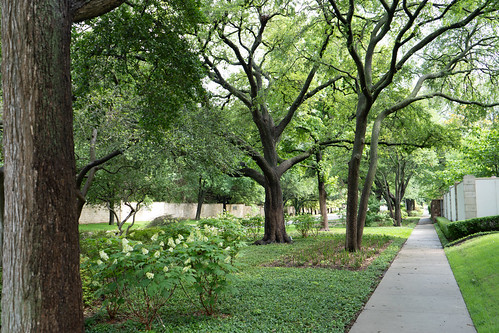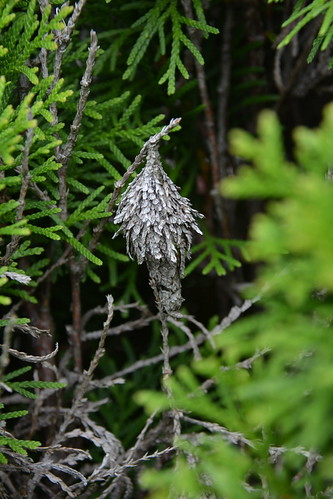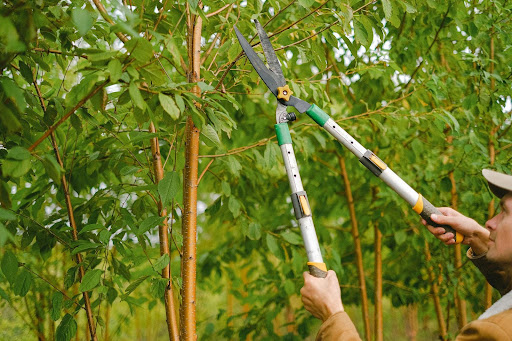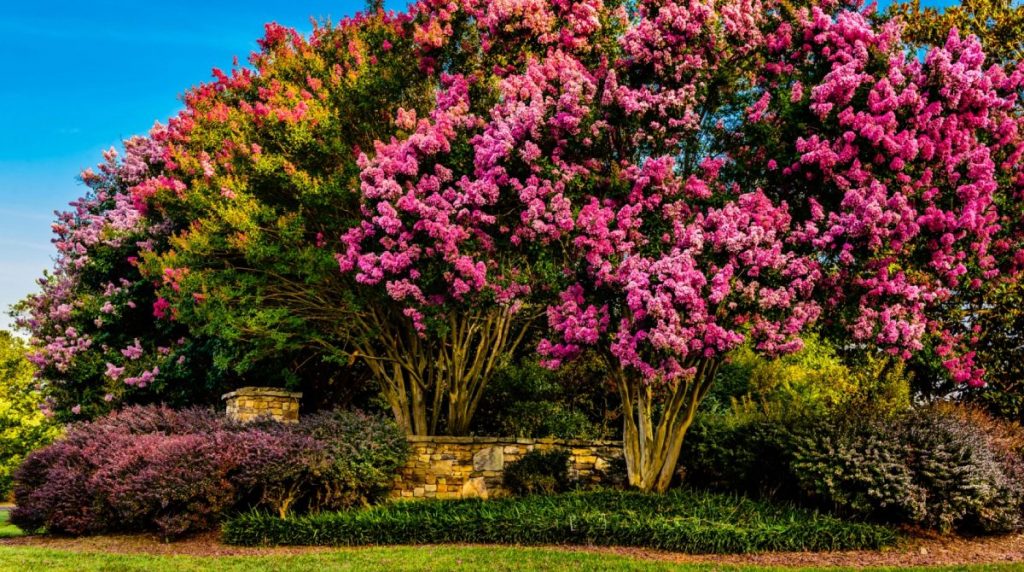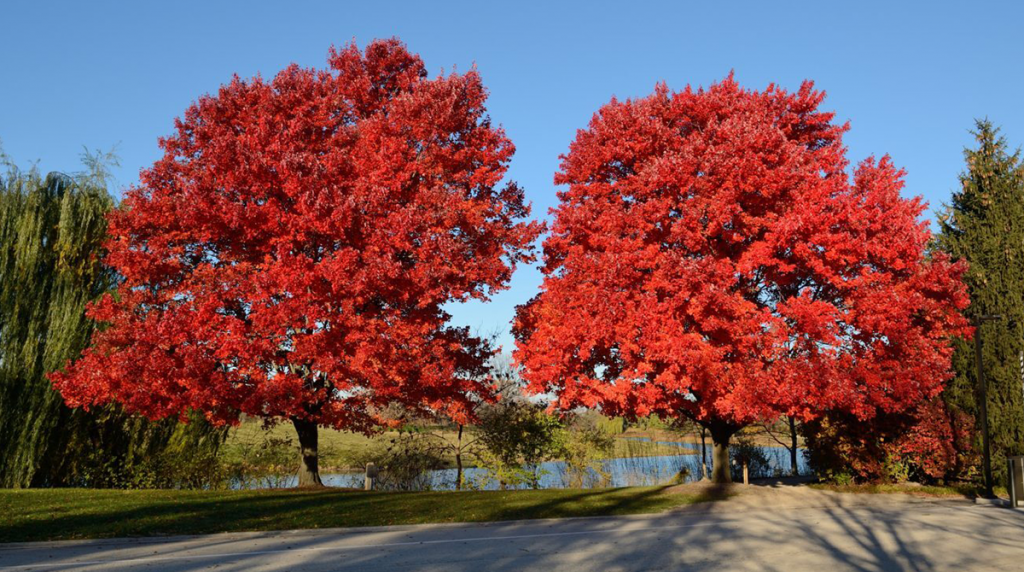
Date February 09, 2021
Category
The Chinese Pistache tree is a favorite among gardeners in North Texas. It’s an ornamental tree, beloved for its graceful structure and flaming fall foliage. But what about when your treasured Chinese Pistache isn’t looking beautiful and healthy anymore? It could be sick or even dying, and if so, you must act fast to save your dying Chinese Pistache tree. Here’s what you need to know:
About the Chinese Pistache Tree
Although the Chinese Pistache (Pistacia Chinensis) is a non-native tree, it has become prevalent in the North Texas area. That’s partially due to Chinese Pistache trees being an invasive tree species, which you should consider before making this tree the crown jewel of your landscape. The females produce berries that birds enjoy and spread around. Unfortunately, it’s difficult to tell the difference between male and female trees because the females don’t produce fruit early enough to identify them at a nursery or tree farm. However, they are elegant trees that turn bright shades of yellow, orange, or red in the fall, which is why many homeowners throughout the metroplex highly favor them.
Signs that your Chinese Pistache Tree is dying
All living things get sick, even trees. That’s why monitoring the health of your Chinese Pistache tree is essential. A few signs to look out for are spots on the leaves, brown or dead leaves, berries becoming dark-colored and shriveled, fungus, insects, and dead limbs. A single dead branch probably isn’t cause for alarm, but you should call a certified arborist immediately if you notice multiple dead branches. If you’re uncertain if a branch is dying or dead, try snapping off one of the smaller twigs. If it’s brittle and breaks easily, that’s a sign it’s dead.
What’s wrong with my Chinese Pistache tree?
Although some trees are more challenging than others, no tree is entirely immune to stress, sickness, and insect infestation. You can help your tree avoid these problems by taking proper care of them. A healthy tree is far less susceptible to attack than an unhealthy tree. If you’ve been monitoring the health of your Chinese Pistache tree and have noticed some concerning signs, read this list of potential causes to see if something here sounds familiar:
- Transplant shock — If you have a newly planted Chinese Pistache and you’re wondering why the leaves are brown or dead, your tree is probably experiencing transplant shock. Proper watering will help your new tree grow its roots and bounce back again in time. Young trees need more water than well-established trees. You want to keep the soil moist but not water-logged. We recommend five gallons of water per caliper inch per week. During weeks of heavy rain, skip the supplemental watering. During the summer, double the amount of supplemental water. Let the soil dry out between watering, and be wary of water pooling around the tree’s base.
- Frost damage — You’ll need to wrap the trunk of your young Chinese Pistache tree to protect it from frost damage and sunscald because young Chinese Pistache trees have smooth trunks, and their bark is not thick enough to protect them from the elements. If you don’t wrap your tree when it’s young, your tree could crack or develop other damage. You can find tree wrap at most nurseries. Call a certified arborist if you think your Chinese Pistache tree has frost damage.
- Incorrect watering or irrigation — Chinese Pistache trees don’t tolerate “wet feet,” so they need well-drained soils to thrive. Even for established Chinese Pistache trees, improper irrigation is one of the most common problems, and it can cause your tree to drop its leaves. Incorrect irrigation also makes your Chinese Pistache more susceptible to disease or pests. If you notice signs like leaf spot, out-of-season discoloration in the leaves, wilting, or leaf dropping, you should call a professional tree care provider right away.
- Insects — One of the most common pest problems for Chinese Pistache trees is sucking bugs like aphids or scale. You might first notice yellowed, distorted leaves, but a closer look will reveal tiny pear-shaped bugs clustered on the leaves. Or, if it’s scale, you might see what looks like small bumps on the branches and foliage. You can wash the pests off with soapy water, but you should also consider talking with an arborist to determine why your tree is susceptible to pests in the first place. One of our ISA Certified Arborists would be happy to visit your property to make an assessment.
- Fungus or disease — Chinese Pistache trees are most susceptible to verticillium wilt, a fungus that can cause discoloration or distortion in the leaves. Verticillium wilt is a disease that you can prevent with well-drained soil. If you’re concerned about your tree or your soil’s condition, talk with a certified arborist tree service.
TreeNewal can help
When your Chinese Pistache tree is healthy, it’s less likely to attract pests or diseases, which is why it’s important to be proactive with your tree’s maintenance and care. Although it might be hard to change your soil’s constitution, there are a couple of things you can do to prepare your tree for success, such as using proper watering and mulching techniques. You also want to ensure that your tree’s roots are healthy, which can be done through air-spading.
TreeNewal has three ISA Certified Arborists on staff and a team of highly qualified tree health care professionals. We offer expert tree care services like disease and insect management, tree nutrition, air-spading, and aeration, and in the case that a tree is beyond repair, tree or stump removal. If you have questions or concerns, one of our staff members can talk with you or visit your property to assess the situation and determine a customized solution for your tree. You can find out more about us on our website at treenewal.com, or call us today at tel:(817) 592-6846.
To learn more about How to save a dying Chinese Pistache Tree, call our Argyle and Southlake-based teams at tel:(817) 592-6846 or send us a message.
We’re a little different than the average tree services company.
Learn more about TreeNewal’s ISA Certified Arborists!
Our Dallas/Fort Worth-based tree doctors can explain how sustainable tree care services add more value to your bottom line.
Healthy trees, healthy lives.
